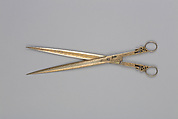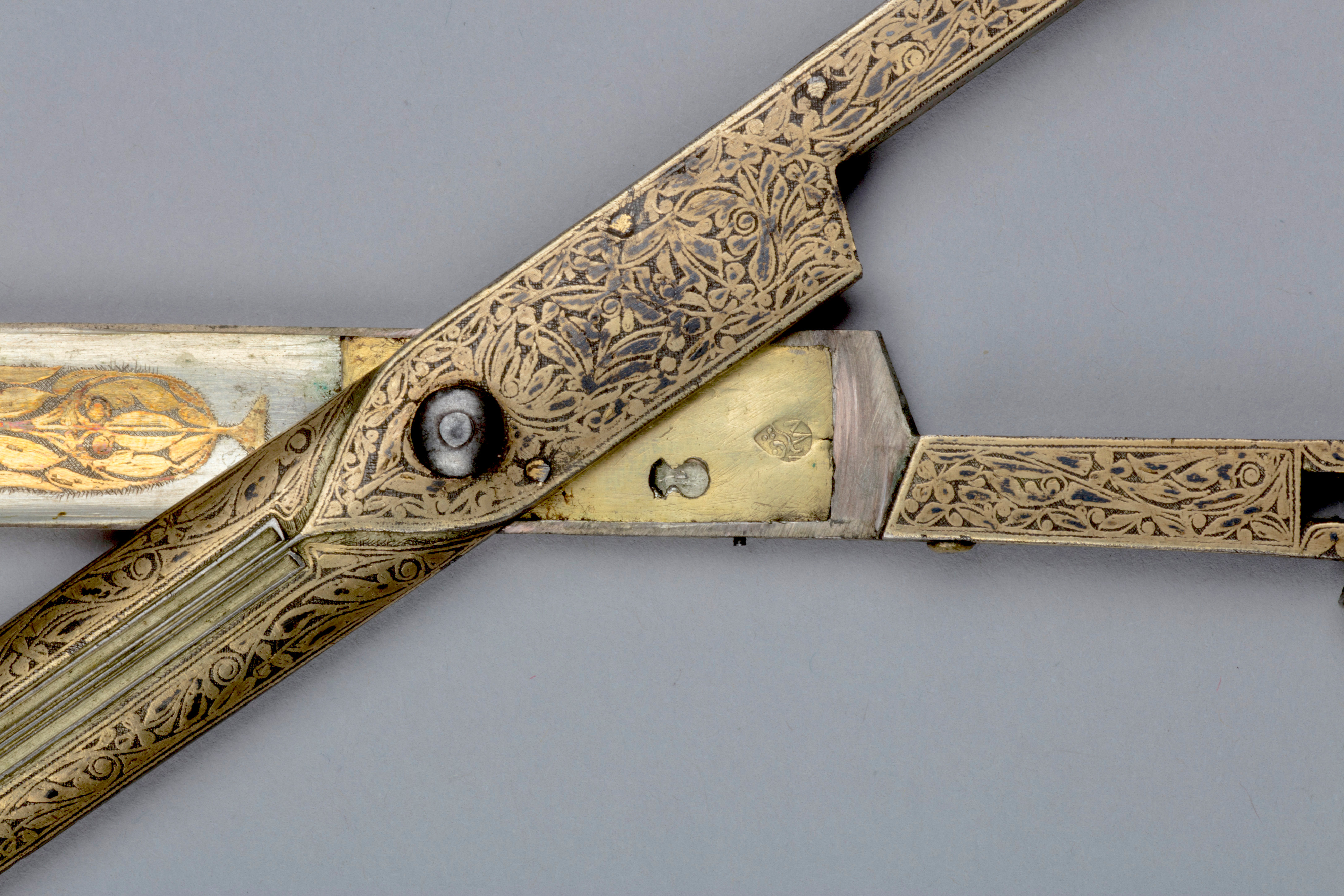Scissors
Not on view
Although small, the elongated shape gives these scissors an elegant appeal. Almost the entire surface, including the inside of the thin blades is finely decorated in floral patterning, exemplifying the intricate craftsmanship of gold damascene metalworking during the late Ottoman period. The artist left his mark by inscribing his name "Sheref" in a small drop-shaped cartouche, hardly visible to the eye. Among the originalities of this example are the handles rendered as an open-work calligraphy. "Ya Fattāh” (Oh [God] the Opener!), referring to one of the ninety-nine beautiful names of God (al-Asmā al-Husnā), is written in elegant thuluth mirror script. Another rare feature is a lock on one side, enabling to lock and unlock the blades. Scissors like this one were considered a catchy "must-have" tool by the Ottoman elite. They were used by calligraphers, viziers, treasurers, chief-secretaries, rulers, and others whose profession related to writing at or nearby the Ottoman palace, as well as by other members of the Ottoman elite. Sometimes such scissors have a dedication which attests that they were fitting gifts or served as recognition for the work and services of a dedicated individual.
Due to rights restrictions, this image cannot be enlarged, viewed at full screen, or downloaded.
This artwork is meant to be viewed from right to left. Scroll left to view more.



